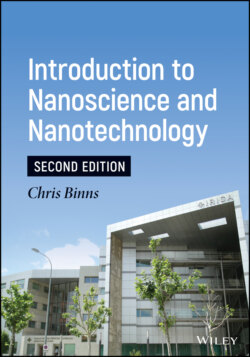Читать книгу Introduction to Nanoscience and Nanotechnology - Chris Binns - Страница 9
Оглавление
Preface to Second Edition
The original proposal for the first edition was submitted in 2005 with the final version submitted to Wiley in 2009. The experience of trying to write a book on nanotechnology is of the Earth shifting under ones feet as the subject develops as fast as one writes. The aim was to try and cover as broad a range of the topic as possible, which in the case of nanotechnology, requires delving into significant areas of physics, chemistry, biology, engineering, materials science, and medicine. A single book inevitably has to have a relatively light touch over a lot of the subject, but the aim was to reach a sufficient depth to be useful as an undergraduate textbook serving as an introduction to many of the subject areas. Hopefully this was achieved, but on the contrary, there was an attempt to explain many of the recent developments without a recourse to too much mathematics or abstract theory so the book would be a useful reference for non‐academic professionals in the field. In all chapters, the most demanding theory was separated out in “Advanced Reading Boxes” so that the basics can be understood without a recourse to mathematics, but this is there for those who want it. The equations in the main text, where they have been included, are as simple as possible.
In a decade there have been huge developments and it was high time to update with a second edition. During that time, I have moved institution from the University of Leicester, UK to la Universidad de Castilla‐La Mancha (UCLM) in Spain, but still working in front‐line research on nanotechnology with my specialist area being gas‐phase synthesis of nanoparticles. The second edition has taken about two years to write, but I have tried to keep ahead of the latest developments, going back and editing completed chapters when necessary. The edition was completed during the Covid19 pandemic of 2020/2021 and the vaccines that emerged are a superb example of some of the nanotechnology that is covered in the book so some description of this has been included. This version is longer, with two extra chapters, including one on graphene, which hardly existed as a topic during the writing of the first edition and is now on everyone's lips. The philosophy has remained the same, however, which is to try and cover everything, and in a two‐level depth so it has as broad audience as possible.
Whatever your use for the book, I hope you enjoy it and get from it the excitement that is fundamental to the topic.
Chris Binns
April 2021
